 W
WThis is an incomplete list of Japanese-run military prisoner-of-war and civilian internment and concentration camps during World War II. Some of these camps were for prisoners of war (POW) only. Some also held a mixture of POWs and civilian internees, while others held solely civilian internees.
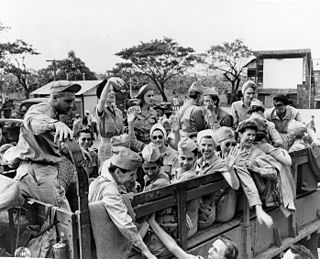 W
WThe Angels of Bataan were the members of the United States Army Nurse Corps and the United States Navy Nurse Corps who were stationed in the Philippines at the outset of the Pacific War and served during the Battle of the Philippines (1941–42). When Bataan and Corregidor fell, 11 Navy nurses, 66 army nurses, and 1 nurse-anesthetist were captured and imprisoned in and around Manila. They continued to serve as a nursing unit while prisoners of war. After years of hardship, they were finally liberated in February 1945.
 W
WThe Bandō POW camp was a prisoner-of-war camp during World War I in what is now Naruto, Tokushima Prefecture, Shikoku Island, Japan. From April 1917 to January 1920, just under a thousand of the 3,900 German soldiers captured at Tsingtao, China in November 1914 were imprisoned at the camp. When the camp closed in 1920, sixty-three of the prisoners chose to remain in Japan.
 W
WBatu Lintang camp at Kuching, Sarawak on the island of Borneo was a Japanese internment camp during the Second World War. It was unusual in that it housed both Allied prisoners of war (POWs) and civilian internees. The camp, which operated from March 1942 until the liberation of the camp in September 1945, was housed in buildings that were originally British Indian Army barracks. The original area was extended by the Japanese, until it covered about 50 acres. The camp population fluctuated, due to movement of prisoners between camps in Borneo, and as a result of the deaths of the prisoners. It had a maximum population of some 3,000 prisoners.
 W
WThe Berhala Island is a small forested island situated in Sandakan Bay in Sandakan, Sabah, Malaysia.
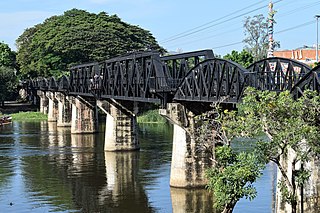 W
WThe Burma Railway, also known as the Death Railway, the Siam–Burma Railway, the Thai–Burma Railway and similar names, is a 415-kilometre (258 mi) railway between Ban Pong, Thailand, and Thanbyuzayat, Burma, built by the Empire of Japan from 1940–1944 to supply troops and weapons in the Burma campaign of World War II. This railway completed the rail link between Bangkok, Thailand, and Rangoon, Burma. The name used by the Japanese Government is Thai–Men-Rensetsu-Tetsudou (泰緬連接鉄道), which means Thailand-Burma-Link-Railway.
 W
WThe Raid at Cabanatuan, also known as The Great Raid, was a rescue of Allied prisoners of war (POWs) and civilians from a Japanese camp near Cabanatuan City, Philippines. On January 30, 1945, during World War II, United States Army Rangers, Alamo Scouts and Filipino guerrillas liberated more than 500 from the POW camp.
 W
WCamp Holmes Internment Camp, also known as Camp #3 and Baguio Internment Camp, near Baguio in the Philippines was established in World War II by the Japanese to intern civilians from countries hostile to Japan. The camp housed about 500 civilians, mostly Americans, between April 1942 and December 1944 when the internees were moved to Bilibid Prison in Manila. Camp Holmes was a Philippine Constabulary base before World War II and later was renamed Camp Bado Dangwa and became a base for the Philippine National Police. It is located near what is now the Halsema Highway.
 W
WCamp O'Donnell is a former United States military reservation in the Philippines located on Luzon island in the municipality of Capas in Tarlac. It housed the Philippine Army's newly created 71st Division and after the Americans' return, a United States Army camp. During World War II, the reservation was used as a Prisoner of war (POW) camp for Filipino and American soldiers captured by Japan during its successful invasion of the Philippines in World War II. About 60,000 Filipino and 9,000 Americans were housed at the camp. During the few months in 1942 that Camp O'Donnell was used as a POW camp, about 20,000 Filipinos and 1,500 Americans died there of disease, starvation, neglect, and brutality.
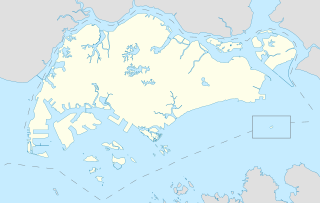 W
WChangi Prison Complex. often known as simply Changi Prison, is a prison located in Changi in the eastern part of Singapore.
 W
WColumbia Country Club Camp was a Japanese internment camp for civilian detainees in Shanghai, China during World War II. It was located in what was then the city outskirts, at 301 Great Western Road.
 W
WDavao Prison and Penal Farm, formerly the Davao Penal Colony (DaPeCol), was established on January 21, 1932 in Panabo City, Davao del Norte, Philippines. It has a land area of 30,000 hectares with a prison reservation of 8,000 hectares. During World War II, the Davao Penal Colony was the biggest prison establishment in the country which was used by the Japanese invading army as their imperial garrison.
 W
WFort van den Bosch, locally known as Benteng Pendem, is a fort located in Pelem administrative village, Ngawi Regency, East Java, Indonesia.
 W
WFour Fires is a novel written by Bryce Courtenay. It was first published in 2001.
 W
WThe Hanaoka mine was an open-pit mine with major deposits of “black ore”, located in the Tōhoku region of northern Japan in the village of Hanaoka, Kitaakita District, Akita Prefecture. The area is now part of the city of Ōdate.
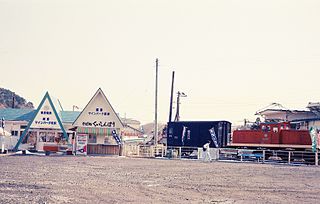 W
WThe Hosokura mine was one of the largest lead and zinc mines in Japan. The mine was located in the town of Uguisuzawa, Miyagi Prefecture in the Tohoku region of northern Japan, in what is now the city of Kurihara. The mine had production of 26 million tonnes of ore grading 1.59% lead, 4.12% zinc and 12.8 million oz of silver before closing in 1987.
 W
WJohn Hay Air Station, more commonly known as Camp John Hay, was a military installation in Baguio, Philippines.
 W
WKanose, also known as Tokyo 16B, was a prisoner of war camp during the Second World War located in the Showa Denko Carbide Plant at Kanose, Niigata in Japan.
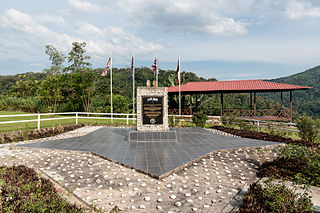 W
WThe Last POW Camp Memorial is a memorial in the district of Ranau in the Malaysian state of Sabah, which commemorates the victims of the Sandakan Death Marches who died during their march to Ranau. Of 1,047 British and Australian prisoners of war, only 189 survived to reach this site which is located near Liwagu Valley. Of these 189 total, 153 prisoners died in the next six weeks, 32 were murdered, while only four managed to escape. The current memorial was built where the former camp was located.
 W
WThe Raid on Los Baños in the Philippines, early Friday morning on 23 February 1945, was executed by a combined U.S. Army Airborne and Filipino guerrilla task force, resulting in the liberation of 2,147 Allied civilian and military internees from an agricultural school campus turned Japanese internment camp. The 250 Japanese in the garrison were killed. It has been celebrated as one of the most successful rescue operations in modern military history. It was the second precisely-executed raid by combined U.S.-Filipino forces within a month, following on the heels of the Raid at Cabanatuan at Luzon on 30 January, in which 522 Allied military POWs had been rescued. The air/sea/land raid was the subject of a 2015 nonfiction book, Rescue at Los Baños: The Most Daring Prison Camp Raid of World War II, by New York Times bestselling author Bruce Henderson. The history of the airborne rescuing force, the 11th Airborne Division, is covered in the 2019 book, When Angels Fall: From Toccoa to Tokyo, the 511th Parachute Infantry Regiment in World War II by author Jeremy C. Holm.
 W
WThe Lost Battalion was the 2nd Battalion, 131st Field Artillery, 36th Infantry Division of the U.S. Army. The men of the battalion, plus the survivors of the sunken Cruiser USS Houston, were captured by the Japanese on the island of Java in the Dutch East Indies in March 1942. It is called the lost battalion because the fate of the men was unknown to the United States until September 1944. They were prisoners of war for 42 months until the end of World War II. 534 soldiers from the battalion and 368 survivors of the Houston were taken prisoner. Most of the men were sent to Thailand to work on the Burma Railway, the building of which is portrayed in the film The Bridge on the River Kwai. Of the 902 soldiers and sailors taken captive, 163 died in captivity. Most of the prisoners of war were from western Texas.
 W
WMitsushima, also known as Matsushima, Tokyo No. 2 Detached Camp, Tokyo #3B, and Tokyo 20, was a prisoner of war camp that provided labour to build the Hiraoka Dam on the Tenryū River in the Central Highlands in Japan.
 W
WMajor Arthur Moon was an Australian army doctor who saved the lives of dozens of Far East prisoners of war as the Thailand-Burma Railway was being constructed during World War II.
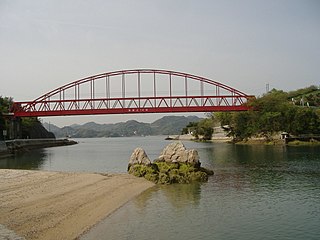 W
WMukaishima was a town in Mitsugi District, Hiroshima Prefecture, Japan.
 W
WThe New Bilibid Prison (NBP) in Muntinlupa City, Philippines, is the main insular penitentiary designed to house the prison population of the Philippines. It is maintained by the Bureau of Corrections (BuCor) under the Department of Justice. As of May 2018, the NBP housed 26,877 convicted criminals.
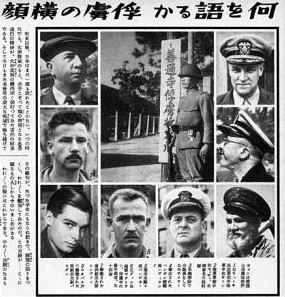 W
WThe Ōfuna Camp was an Imperial Japanese Navy installation located in Kamakura, outside Yokohama, Japan during World War II, where high-value enlisted and officers, particularly pilots and submariner prisoners of war were interrogated and incarcerated by Japanese naval intelligence Richard O'Kane, Louis Zamperini and Gregory Boyington were among the prisoners held at Ōfuna.
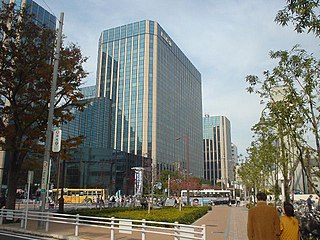 W
WŌmori (大森) is a district located a few kilometres south of Shinagawa, Tokyo, Japan accessed by rail via the Keihin Tohoku line, or by road via Dai Ichi Keihin. Ōmorikaigan, the eastern area of Ōmori, can be reached via the Keikyu line.
 W
WPalawan, officially the Province of Palawan, is an archipelagic province of the Philippines that is located in the region of Mimaropa. It is the largest province in the country in terms of total area of jurisdiction. Its capital is the city of Puerto Princesa, but the city is governed independently from the province as a highly urbanized city.
 W
WThe Sandakan camp, also known as Sandakan POW Camp, was a prisoner-of-war camp established during World War II by the Japanese in Sandakan in the Malaysian state of Sabah. This site has gained notoriety as the Sandakan Death Marches started from here. Now, part of the former site houses the Sandakan Memorial Park.
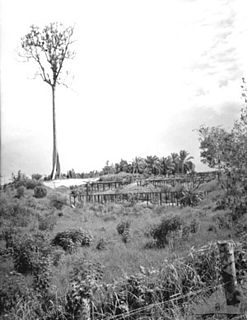 W
WThe Sandakan Death Marches were a series of forced marches in Borneo from Sandakan to Ranau which resulted in the deaths of 2,434 Allied prisoners of war held captive by the Empire of Japan during the Pacific campaign of World War II in the Sandakan POW Camp. By the end of the war, of all the prisoners who had been incarcerated at Sandakan and Ranau, only six Australians survived, all of whom had escaped. It is widely considered to be the single worst atrocity suffered by Australian servicemen during the Second World War.
 W
WThe Sandakan Memorial Park is a memorial site built in the former grounds of the former Sandakan camp in the Malaysian state of Sabah. The site is dedicated as a memory for all prisoners in the camp who died during the Sandakan Death Marches, and to those died during a march to Ranau. It is also recognises the suffering and sacrifice of the native population.
 W
WSanto Tomas Internment Camp, also known as the Manila Internment Camp, was the largest of several camps in the Philippines in which the Japanese interned enemy civilians, mostly Americans, in World War II. The campus of the University of Santo Tomas in Manila was utilized for the camp, which housed more than 3,000 internees from January 1942 until February 1945. Conditions for the internees deteriorated during the war and by the time of the liberation of the camp by the U.S. Army many of the internees were near death from lack of food.
 W
WSentosa Island, known mononymously as Sentosa, is an island located off the southern coast of Singapore's main island. The island is separated from the main island of Singapore by a channel of water, the Keppel Harbour, and is adjacent to Pulau Brani, a smaller island wedged between Sentosa and the main island.
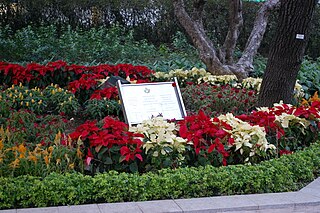 W
WSham Shui Po Barracks was a British Army facility built in the 1920s in the Sham Shui Po area of Kowloon, Hong Kong. The base was bounded by Fuk Wa Street to the east by Yen Chow Street and to the west by Tonkin Street and Camp Street.
 W
WStanley Internment Camp was a civilian internment camp in Hong Kong during the Second World War. Located in Stanley, on the southern end of Hong Kong Island, it was used by the Japanese imperial forces to hold non-Chinese enemy nationals after their victory in the Battle of Hong Kong, a battle in the Pacific campaign of the Second World War. About 2,800 men, women, and children were held at the non-segregated camp for 44 months from early January 1942 to August 1945 when Japanese forces surrendered. The camp area consisted of St Stephen's College and the grounds of Stanley Prison, excluding the prison itself.
 W
WThe Women's Vocal Orchestra of Sumatra (1943-1944) was a choral group founded in a Japanese prisoner of war camp in Sumatra during World War ll.
 W
WThe Weihsien Internment Camp was a Japanese operated ”Civilian Assembly Center” in the former Wei County, located in the present-day city of Weifang, Shandong, China. The compound was a Japanese-run internment camp created during World War II to hold civilians of Allied countries living in North China. The camp's population initially included British, Canadian, American, Australian, Dutch, Belgian and other citizens. An additional group of Italian internees arrived in the camp on December 30, 1943, after the allied invasion of Sicily and the fall of Mussolini. In total, Weihsien remained in operation after the Japanese invasion until American forces liberated the camp on August 17, 1945. Information on Weihsien has been learned through papers, diaries, official reports and letters written by internees, family members, and other people affected.